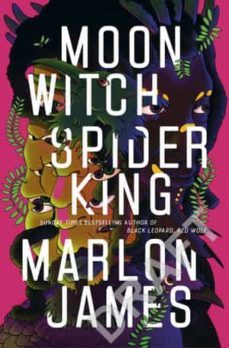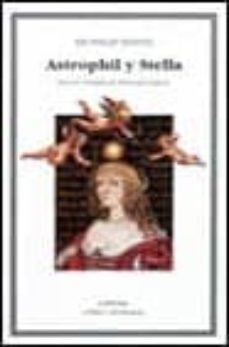Imprescindibles
Más vendidos Libros más leídos eBooks más leídos Todos los libros Todos los libros Autores destacados Series y sagas
Recomendados Libros recomendados Autores destacados Libros que inspiran Vidas con historia LGTBIQ+ English books
Ficción
Literatura Contemporánea Estudios literarios Clásicos Cuentos Poesía Teatro Libros de bolsillo Sagas literarias
Géneros literarios Novela romántica y erótica Novela negra Novela histórica Narrativa fantástica Novela de ciencia ficción Novela de terror Narrativa de humor Narrativa de viajes
No Ficción
Ciencias y tecnología Biología Ciencias Ciencias naturales Divulgación científica Informática Ingeniería Matemáticas Medicina Salud y dietas Formación Idiomas Estilo de vida Libros de Cocina Guías de viaje Narrativa de viajes Deportes Libros de Juegos Manualidades
Humanidades Autoayuda y espiritualidad Ciencias humanas Derecho Economía y Empresa Psicología y Pedagogía Filosofía Sociología Filología Biblioteconomía Estudios filológicos Estudios lingüísticos Estudios literarios Historia y crítica de la Literatura
Infantil
Juvenil
#Jóvenes lectores Narrativa juvenil Clásicos adaptados Libros Wattpad Libros Booktok Libros de influencers Libros de Youtubers Libros Spicy Juveniles Libros LGTBIQ+ Temas sociales Libros ciencia ficción Libros de acción y aventura Cómic y Manga Juvenil Cómic Juvenil Manga Shonen Manga Shojo Autores destacados Jennifer L. Armentrout Eloy Moreno Nerea Llanes Hannah Nicole Maehrer
Libros de fantasía Cozy Fantasy Dark academia Hadas y Fae Romantasy Royal Fantasy Urban Fantasy Vampiros y hombres lobo Otros Misterio y terror Cozy mistery Policiaca Spooky Terror Thriller y suspense Otros
Libros románticos y de amor Dark Romance Clean Romance Cowboy Romance Mafia y amor Romance dramatico Romance dramatico Romcom Sport Romance Otros Clichés Enemies to Lovers Friends to Lovers Hermanastros Slow Burn Fake Dating Triángulo amoroso
Cómic y Manga
Novela gráfica Novela gráfica americana Novela gráfica europea Novela gráfica de otros países Personajes, series y sagas Series y sagas Star Wars Superhéroes Cómics DC Cómics Marvel Cómics otros superhéroes Cómics Valiant
eBooks
Literatura Contemporánea Narrativa fantástica Novela de ciencia ficción Novela de terror Novela histórica Novela negra Novela romántica y erótica Juvenil Más de 13 años Más de 15 años Infantil eBooks infantiles
Humanidades Autoayuda y espiritualidad Ciencias humanas Economía y Empresa Psicología y Pedagogía Filosofía Historia Historia de España Historia Universal Arte Cine Música Historia del arte
Ciencia y tecnología Ciencias naturales Divulgación científica Medicina Salud y dietas Filología Estudios lingüísticos Estudios literarios Historia y crítica de la Literatura Estilo de vida Cocina Guías de viaje Ocio y deportes
PHILIP SIDNEY
Recibe novedades de PHILIP SIDNEY directamente en tu email
Filtros
Del 1 al 5 de 5
CATEDRA 9788437621050
A pesar de su corta vida, la memoria de Philip Sidney ha pervivido durante varios siglos como la de una de las figuras más destacadas del Renacimiento inglés. Soldado, cortesano y hombre de letras, en su persona aunaba todos los requisitos del ideal del perfecto caballero renacentista. A raiz de la publicacion de su biografia en 1652, tuvo lugar una especie de mitificacion de su persona que le convirtio en modelo moral, politico y religioso.La Defensa de la poesia de Sidney responde a la preocupacion renacentista por el estatus de la literatura, su funcion estetica, didactica y social y su relacion con otras producciones artisticas, asi como con las diversas disciplinas del conocimiento. Su Defensa se circunscribe, ademas, en unas particulares condiciones politicas, culturales, religiosas y sociales que la dotan de forma y contenido. La guerra contra la poesia encuentra en Sidney al mejor y mas dotado de sus defensores y la teoria literaria inglesa contara a partir de entonces con un texto clave en su historia.
Ver más
Tapa dura
PHILIP SIDNEY y EDITED BY KATHERINE DUNCAN JONES
OXFORD UNIVERSITY PRESS 9780192822741
Tapa blanda
PENGUIN 9780140431117
For more than 200 years after its first publication in 1593, The Countess of Pembroke's Arcadia was the most read, best-selling story in the language - the great English popular classic and one of the most influential. As much a work of entertainment and wit as of instruction, it affords the best insight we have into the tastes and standards of the Elizabethans. Sidney became to his contemporaries the beau idéal of the Renaissance courtier and his Arcadia embodies the highest literary aspirations of the age. Here we have a gladiatorial display of rhetoric which outshines anything achieved in English before and possibly since. Though there has been much scholarly study of Sidney over recent years, The Countess of Pembroke's Arcadia, in the traditional form in which it was read down the centuries, is not available anywhere else. The text is accompanied by a full introduction and notes.
Ver más
Tapa blanda
Everest Media LLC 9798330007387
In the verdant realm of Arcadia, where nymphs dance and shepherds sing, a tale of unrequited love unfolds. Double Sestina - Ye Goatherd Gods, a masterpiece by Sir Philip Sidney, weaves a tapestry of longing and despair.As the goatherd Strephon pines for the unattainable Urania, his heartstrings are plucked with each verse. The sestina form, with its intricate pattern of repeating words, echoes the relentless torment of his unfulfilled desire. Through Sidneys lyrical prose, we witness the depths of Strephons anguish and the bittersweet beauty of his unyielding love.
Ver más
Audiolibro
Del 1 al 5 de 5


![harry potter y el cáliz de fuego (harry potter [ediciones ilustra das interactivas] 4)-j.k. rowling-9788419868497](https://imagessl7.casadellibro.com/a/l/s5/97/9788419868497.webp)




























